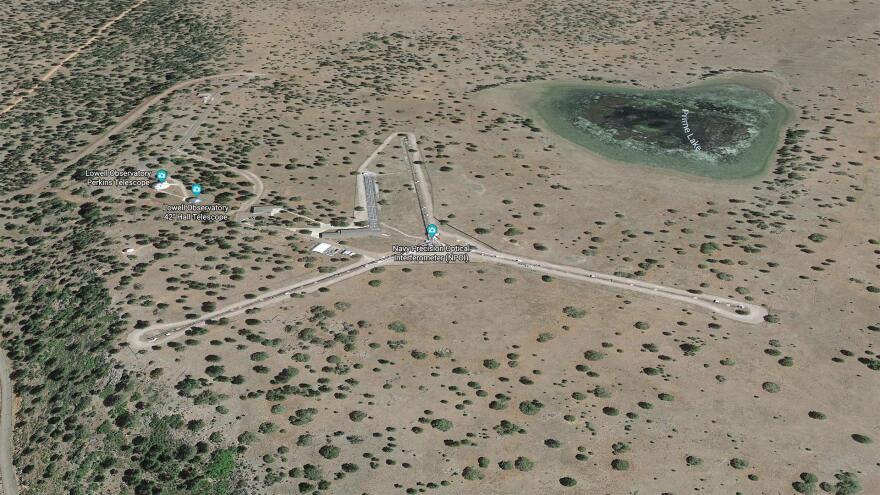You’ve likely seen pictures of the Very Large Array Radio Telescope near Socorro in New Mexico, which has been featured in movies like Contact and Independence Day.
But you may not know that northern Arizona has its own Very Large Array... on Anderson Mesa.
The Naval Precision Optical Interferometer or NPOI south of Flagstaff, uses visible light instead of radio waves to study the cosmos. It’s not nearly as noticeable as the giant radio dishes of Socorro, but from the air, it is every bit as impressive.
It consists of tubes shaped like a giant ‘Y’ with arms two-and-a-half football fields long. Those tubes are evacuated to form a vacuum the size of two Olympic swimming pools. Telescope mirrors along the arms can be moved towards the Y’s center for a “wide angle” mode, or spread out up to 1,200 feet to “zoom in” on a distant object.
The light they collect is sent by secondary mirrors aligned extremely precisely, into a room with rows of smaller mirrors and prisms, then into off-the-shelf medical cameras… similar to those used in mammogram imaging.
The result is a telescope with a resolution that could read the label on an orange placed in New York City... from Flagstaff!
Astronomers have already used NPOI to study the sizes and temperatures of nearby stars. In the future, they hope to capture the shadows of exoplanets orbiting around them.
This Earth Note was written by Diane Hope and produced by KNAU and the Sustainable Communities Program at Northern Arizona University.








